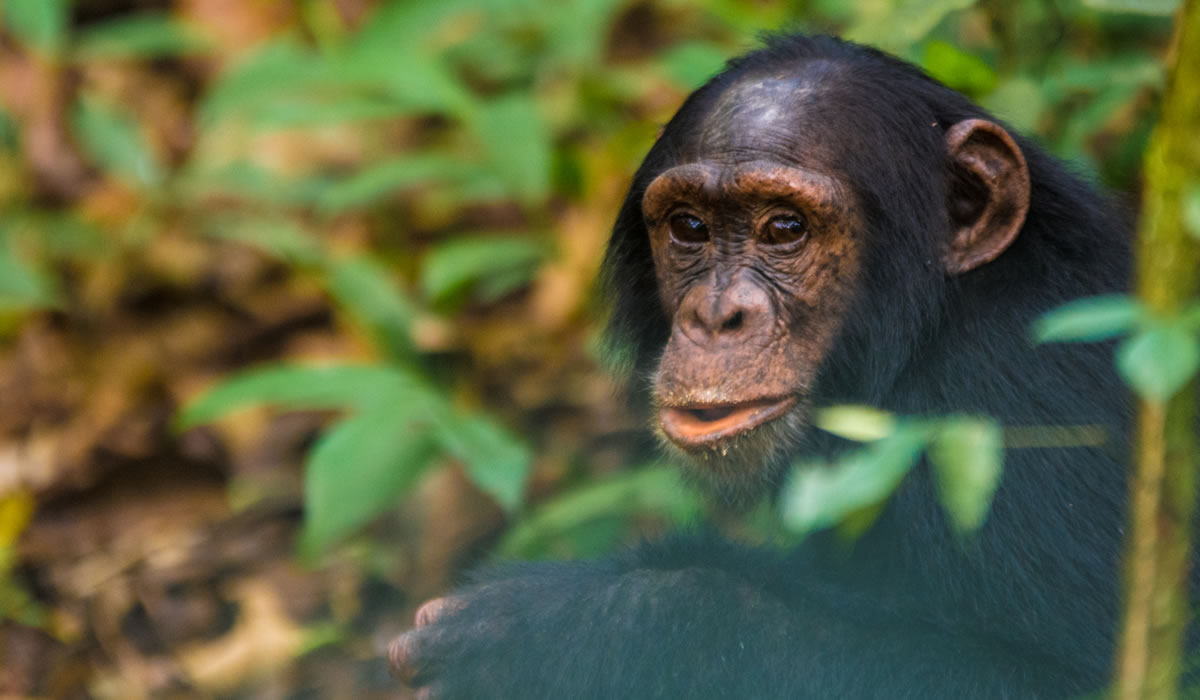Kibale Forest National Park is one of Uganda’s most treasured eco-tourism destinations, famous for its high concentration of primates and breathtaking rainforest landscape. Located in western Uganda near the town of Fort Portal, the park covers approximately 795 square kilometers of tropical forest, swamps, and grasslands. It forms part of a larger conservation corridor that links Queen Elizabeth National Park to the south, creating a haven for wildlife to thrive and move freely. Known as the “Primate Capital of the World,” Kibale is home to 13 species of primates including the chimpanzees that attract thousands of visitors every year. Its mix of wildlife, bird species, and cultural encounters makes it one of the best destinations for safaris in East Africa.

The History and Importance of Kibale
Kibale was first gazetted as a forest reserve in 1932 and later upgraded to a national park in 1993 to protect its rich biodiversity and the increasing chimpanzee population. Over the years, the park has gained international recognition for its primate conservation projects and eco-tourism initiatives. Its ecological role is significant, as it is part of the Albertine Rift, an area known for some of the highest levels of biodiversity in Africa. The park’s protection is vital not only for wildlife but also for local communities who benefit from eco-tourism revenue and sustainable conservation programs.
The Chimpanzees of Kibale
The major highlight of Kibale Forest National Park is chimpanzee trekking, an activity that brings visitors face to face with our closest relatives. With over 1,500 chimpanzees living in the park, it is one of the best places in Africa to see them in the wild. Visitors join guided treks led by Uganda Wildlife Authority rangers, who track chimpanzee groups by following vocal calls, nests, and feeding sites. Once a group is located, visitors are allowed one hour to observe their behaviors such as feeding, grooming, playing, or even hunting smaller primates.
Chimpanzee trekking permits are affordable compared to gorilla trekking in Bwindi, costing around 250 USD for foreign non-residents. For those who want more than an hour, the Chimpanzee Habituation Experience is available. This unique activity allows visitors to spend up to four hours with a chimpanzee group that is still undergoing habituation. Watching chimps from dawn until dusk as they forage, build nests, and interact socially is one of the most rewarding wildlife experiences in Uganda.
Other Primates and Wildlife
Kibale is not just about chimpanzees. The park has the highest primate diversity in Africa, with 13 different species. These include the black-and-white colobus monkey, red colobus monkey, blue monkey, olive baboon, grey-cheeked mangabey, L’Hoest’s monkey, vervet monkey, and the endangered red-tailed monkey. The forest is also home to nocturnal primates such as pottos and bush babies, which can be seen during guided night walks.
Beyond primates, Kibale also shelters 70 species of mammals including forest elephants, bush pigs, duikers, buffalo, and leopards, although most are rarely seen because of the thick vegetation. The park is a paradise for birdwatchers with over 370 recorded species, including the African pitta, green-breasted pitta, and crowned eagle. Butterflies, reptiles, and amphibians further add to the park’s incredible biodiversity, making it a living classroom for researchers and nature enthusiasts.
Birdwatching and Nature Walks
Birdwatching in Kibale is a major attraction for ornithologists and casual bird lovers alike. The Bigodi Wetland Sanctuary, located on the edge of the park, is particularly famous for its birdlife, with species such as the great blue turaco, papyrus gonolek, and hornbills commonly sighted. Guided birding tours inside the forest provide opportunities to spot rare species that thrive in the canopy.
Nature walks within the park are another way to explore its beauty. The Kanyanchu Visitor Center is the starting point for most activities, including chimpanzee trekking and forest hikes. Trails range from short walks to longer hikes that take visitors deeper into the forest, exploring swamp habitats, crater lakes, and cultural sites. Night walks are also offered, giving a chance to encounter nocturnal animals and listen to the unique sounds of the forest.
Community and Cultural Encounters
A visit to Kibale Forest National Park is incomplete without engaging with the surrounding communities. The Bigodi community, through the Kibale Association for Rural and Environmental Development (KAFRED), runs eco-tourism projects that support conservation while empowering locals. Tourists can participate in cultural walks that include visiting homes, learning traditional cooking, watching local dances, and exploring herbal medicine practices.
The Bigodi Wetland Sanctuary is a flagship example of community conservation. Revenue from tourism supports schools, health centers, and income-generating activities for families, proving that conservation and development can go hand in hand. This partnership has helped reduce poaching and habitat destruction while creating pride among locals who now view wildlife as a source of livelihood rather than a threat.
Accommodation Options
Kibale offers a wide range of accommodation, from budget camps to luxurious eco-lodges. Some of the most popular lodges include Kyaninga Lodge, Ndali Lodge, Primate Lodge Kibale, and Kibale Forest Camp. Luxury options provide stunning views of crater lakes and forest canopies, while budget travelers can enjoy simple yet comfortable bandas and campsites. Most lodges are located near the Kanyanchu Visitor Center for easy access to trekking activities. Staying close to the forest offers a chance to wake up to the sounds of birds, primates, and the tranquil ambiance of nature.
Accessibility and Best Time to Visit
Kibale Forest National Park is easily accessible by both road and air. By road, it takes about 5 to 6 hours from Kampala or Entebbe, passing through beautiful countryside, tea plantations, and crater lakes. The park can also be combined with visits to Queen Elizabeth National Park, Semuliki National Park, or Rwenzori Mountains, all of which are within a short drive. For those preferring air travel, domestic flights operated by AeroLink land at Kasese or Fort Portal, followed by a short road transfer to the park.
The best time to visit Kibale is during the dry seasons from December to February and June to September. During these months, trekking trails are less muddy, and chimpanzees are easier to track. However, Kibale is a rainforest, meaning rain can occur at any time. The wet seasons of March to May and October to November are also rewarding, with lush scenery and fewer crowds, though trails may be more challenging.
Conservation Efforts and Achievements
Like many protected areas in Africa, Kibale faces conservation challenges such as habitat encroachment, illegal logging, and human-wildlife conflict. However, strong partnerships between Uganda Wildlife Authority, international organizations, and local communities have led to positive outcomes. Programs such as revenue-sharing, community eco-tourism, and chimpanzee research have significantly reduced threats.
Chimpanzee populations in Kibale are stable and even increasing thanks to long-term research projects by institutions like Makerere University and international partners. The park has also become a hub for primate studies, contributing valuable knowledge to global conservation efforts. By choosing to visit Kibale, travelers directly support these initiatives and help sustain one of the last remaining tropical forests in Africa.
Why Visit Kibale Forest National Park
Kibale Forest National Park offers one of the most authentic and rewarding safari experiences in Uganda. It combines thrilling chimpanzee encounters with rich biodiversity, scenic landscapes, and cultural interactions. Whether you are trekking through dense jungle to watch chimpanzees swing from tree to tree, birdwatching in Bigodi Wetland, or enjoying the hospitality of local communities, Kibale delivers an experience that lingers in memory long after the trip ends.
For visitors planning a Uganda safari, Kibale is easily combined with gorilla trekking in Bwindi Impenetrable National Park, wildlife safaris in Queen Elizabeth National Park, or hikes in the Rwenzori Mountains. This makes it a central piece in any itinerary, offering both adventure and education.
As a destination, Kibale embodies the essence of eco-tourism, where conservation, community, and travelers all benefit. It is not just a park, it is a living treasure that protects some of our closest relatives in the animal kingdom while showcasing the beauty of Uganda’s natural heritage.
